Search Images
Browse Content (p. 624)
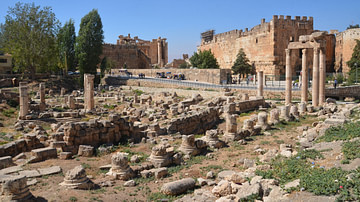
Image
Baalbek, Lebanon
Baalbek is an ancient Phoenician city located in what is now modern-day Lebanon, in the northern part of the Beqaa Valley, a fertile area with plentiful springs. First settled at the beginning of the 3rd millennium BCE, Baalbek was an essential...
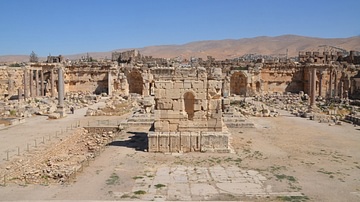
Image
Baalbek, Great Courtyard
An overview of the Great Courtyard of the Temple of Jupiter Heliopolitanus at Baalbek (Heliopolis) with two monumental altars and two water basins within a porticoed enclosure. It covers a vast area of some 134 m by 112 m (439 ft by 367 ft...
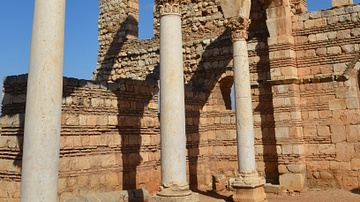
Image
Umayyad Palace at Anjar, Lebanon
The colonnades of the 8th century CE Umayyad palace at Anjar (Lebanon). The palace had a central courtyard surrounded by a peristyle and incorporated decorative or architectonic elements of the Roman era.
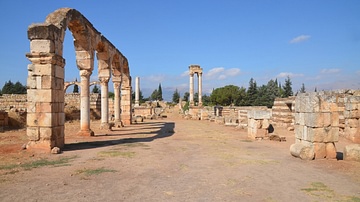
Image
Anjar, Lebanon
The ancient city of Anjar is the sole Umayyad settlement in Lebanon, founded during the 8th century CE Umayyad caliphate. It is located in the Bekaa Valley, 47 kilometres (29 miles) south of Baalbek.
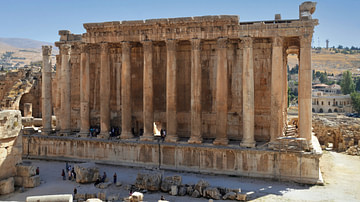
Image
Temple of Bacchus, Baalbek
The so-called Temple of Bacchus at Baalbek (modern-day Lebanon). Recently redated to the 3rd century CE, it may have been used for the imperial cult, in addition to the veneration of other gods such as Bacchus and Venus.
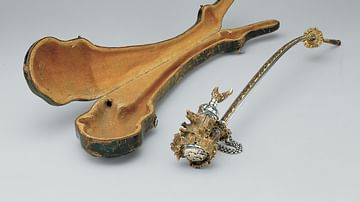
Image
Tobacco Pipe
Tobacco pipe with case made of silver, deer antler, horn, and leather, from Southern Germany, c. 1740 CE.
Metropolitan Museum of Art, New York.
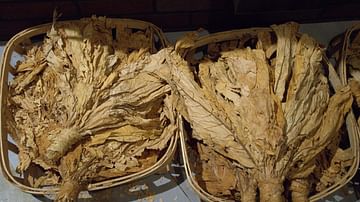
Image
Dried Tobacco
Dried tobacco. Scenes from North Carolina tobacco country.
Tobacco Farm Life Museum, Kenly, NC

Image
Tobacco Plantation
Tobacco Plantation, detail of a print by Richard H. Laurie, 1821 CE.
Fort McHenry, Baltimore, Maryland.
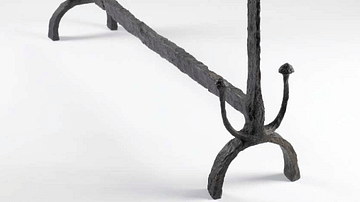
Image
Celtic Fire-Dog
A Celtic fire-dog excavated at Welwyn, Hertfordshire, England. Iron, 50-25 BCE. Height: 96.5 cm. Fire-dogs were likely used for spit-roasting meat at Celtic feasts. (British Museum, London)
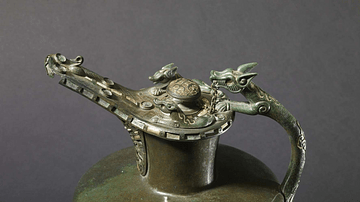
Image
Detail of a Basse-Yutz Flagon
Detail of one of the Basse-Yutz Flagons, Celtic vessels inspired by Etruscan work and used for pouring wine. Lorraine region, France. Copper alloy with coral and enamel inlay. 420-360 BCE. Height: 39.6 cm. (British Museum, London)